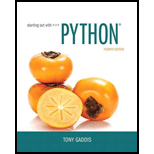
This is the first index in a string.
a. –1
b. 1
c. 0
d. The size of the string minus one
Index denotes the characters within the string, and the first index will be 0.
Hence, the correct answer is option “C”.
Explanation of Solution
Indexing in string:
- The characters in a string could be accessed individually with an index.
- Each character has an index that would denote its position in the string.
- The example for string index is shown below:

- The index of the first character will be 0.
- The index of the last character in string is 1 less than the total characters in the string.
Syntax:
The syntax for iteration using indexing is shown below:
string_variable = ‘string_value’
variable = string_variable[index]
Explanation:
In the above syntax,
- The “string_variable” denotes the string that is accessed.
- The “index” denotes index of characters in the string.
- The expression “string_variable[index]” returns a copy of characters at index “index” in “string_variable”.
Example Program:
#Assign string to variable
name = 'Ike'
#Assign first character to variable
ch= name[0]
#Display result
print(ch)
Output:
I
In the above Python code, the first line assigns a string to variable “name”. In the second line, the first character of string is assigned to variable. In the third line, the result is displayed on the screen.
Explanation for incorrect options:
Index “-1”:
The index “-1” represents the last element in the string.
Hence, option “A” is wrong.
Index “1”:
The index “1” represents the last element in the string.
Hence, option “B” is wrong.
The size of string minus one:
The index “size of string minus one” denotes the index for the last element in the string.
Hence, option “D” is wrong.
Want to see more full solutions like this?
Chapter 8 Solutions
Starting Out with Python (4th Edition)
Additional Engineering Textbook Solutions
Starting Out with Java: From Control Structures through Data Structures (4th Edition) (What's New in Computer Science)
SURVEY OF OPERATING SYSTEMS
Concepts Of Programming Languages
Starting Out with Java: From Control Structures through Objects (7th Edition) (What's New in Computer Science)
Java How to Program, Early Objects (11th Edition) (Deitel: How to Program)
Starting Out With Visual Basic (8th Edition)
- I need help in explaining how I can demonstrate how the Laplace & Inverse transformations behaves in MATLAB transformation (ex: LIke in graph or something else)arrow_forwardYou have made the Web solution with Node.js. please let me know what problems and benefits I would experience while making the Web solution here, as compared to any other Web solution you have developed in the past. what problems and benefits/things to keep in mind as someone just learningarrow_forwardPHP is the server-side scripting language. MySQL is used with PHP to store all the data. EXPLAIN in details how to install and run the PHP/MySQL on your computer. List the issues and challenges I may encounter while making this set-up? why I asked: I currently have issues logging into http://localhost/phpmyadmin/ and I tried using the command prompt in administrator to reset the password but I got the error LOCALHOST PORT not found.arrow_forward
 EBK JAVA PROGRAMMINGComputer ScienceISBN:9781337671385Author:FARRELLPublisher:CENGAGE LEARNING - CONSIGNMENT
EBK JAVA PROGRAMMINGComputer ScienceISBN:9781337671385Author:FARRELLPublisher:CENGAGE LEARNING - CONSIGNMENT Systems ArchitectureComputer ScienceISBN:9781305080195Author:Stephen D. BurdPublisher:Cengage Learning
Systems ArchitectureComputer ScienceISBN:9781305080195Author:Stephen D. BurdPublisher:Cengage Learning C++ Programming: From Problem Analysis to Program...Computer ScienceISBN:9781337102087Author:D. S. MalikPublisher:Cengage Learning
C++ Programming: From Problem Analysis to Program...Computer ScienceISBN:9781337102087Author:D. S. MalikPublisher:Cengage Learning C++ for Engineers and ScientistsComputer ScienceISBN:9781133187844Author:Bronson, Gary J.Publisher:Course Technology PtrProgramming Logic & Design ComprehensiveComputer ScienceISBN:9781337669405Author:FARRELLPublisher:Cengage
C++ for Engineers and ScientistsComputer ScienceISBN:9781133187844Author:Bronson, Gary J.Publisher:Course Technology PtrProgramming Logic & Design ComprehensiveComputer ScienceISBN:9781337669405Author:FARRELLPublisher:Cengage Programming with Microsoft Visual Basic 2017Computer ScienceISBN:9781337102124Author:Diane ZakPublisher:Cengage Learning
Programming with Microsoft Visual Basic 2017Computer ScienceISBN:9781337102124Author:Diane ZakPublisher:Cengage Learning





